Community prevalence, limiting in-person time, and a quick response are key tools in reducing school-based outbreaks
A new report released through the Washington Department of Health (DOH) and the Institute for Disease Modeling (IDM) in Seattle highlights the risks and mitigation strategies for public schools as students return to classrooms.
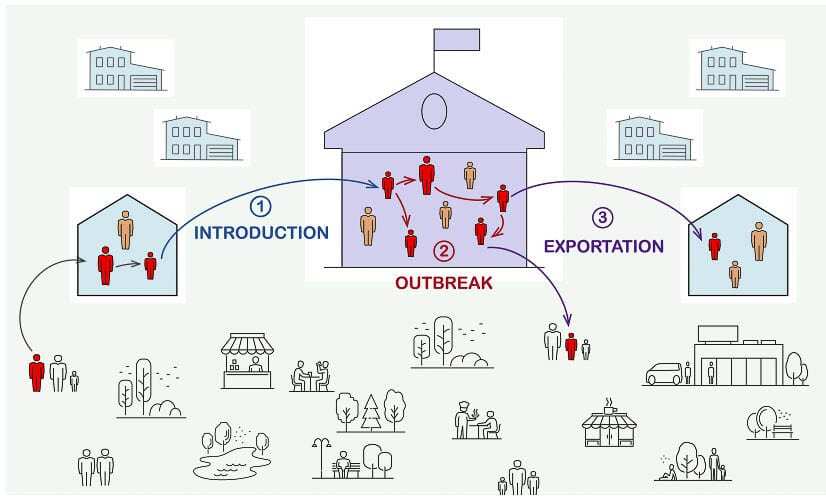
The 29-page report, the fourth in a series, uses detailed modeling of COVID-19 behaviors to examine how the virus could enter a school, the potential for transmission in a building, and how that could, in return, impact the community at large.
Perhaps unsurprisingly, the study found that the rate of COVID-19 transmission in a school is closely linked to the prevalence of the disease in the greater community. That could allow districts to calculate risk factors based on case rates, school sizes, and other factors to determine the likelihood of an outbreak, and how severe it might be.
As of Jan. 1, the state had reported 84 outbreaks linked to public and private schools, affecting an estimated 305 people. That was out of more than 200,000 students in classrooms throughout the state.
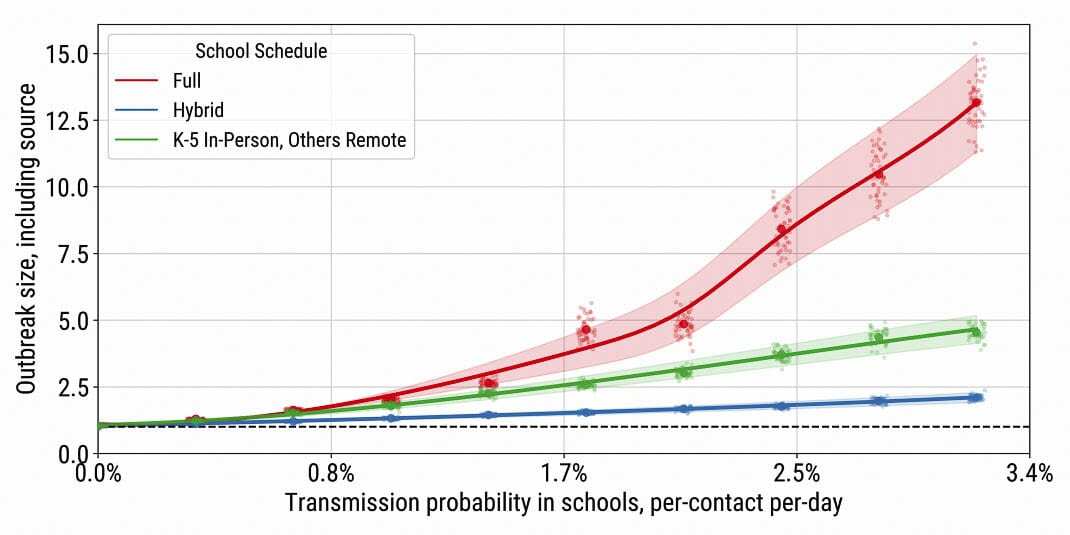
Half of those cases were students, and no deaths had been linked to an outbreak at a school.
In Clark County, there were 11 total outbreaks, impacting 24 people for the period ending Dec. 31, 2020.
One Those were also predominantly younger students, and the IDM report confirmed that K-5 classrooms run a much lower risk of COVID-19 transmission.
The IDM report found that the dates with the highest risk of infection were on the first day students returned to classrooms, as well as the day following a holiday, followed by Mondays.
Hybrid learning, with students attending classes two days a week, presented a much stronger barrier against widespread outbreaks, according to the simulation. This was partly due to less long-term exposure for teachers, as well as limiting mixing of student cohorts.
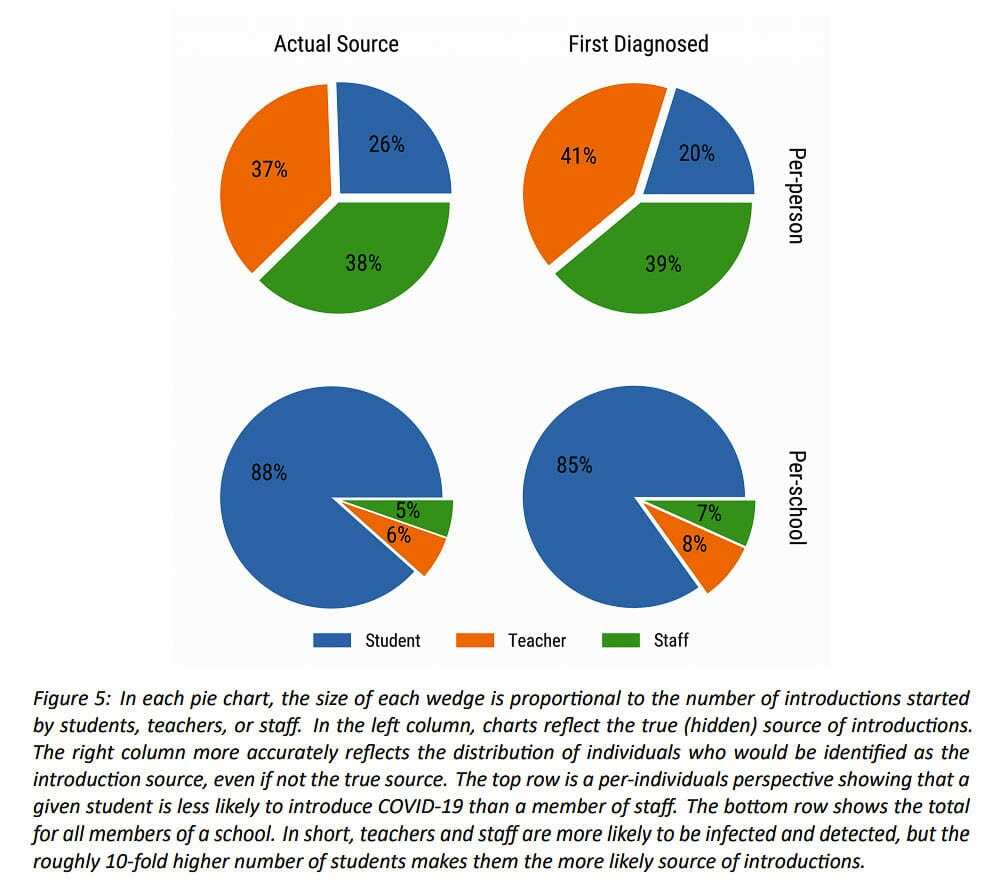
That approach, the study found, reduces the risk of COVID-19 outbreaks in schools by at least 25 percent.
“Modeling efforts like this can improve our understanding of how community transmission and school transmission of COVID-19 affect each other” said Lacy Fehrenbach, MPH, deputy secretary of COVID-19 response for DOH. “This study supports what we’ve seen in the literature, the experience of Washington schools, and recent CDC guidance that while testing and vaccines can provide additional levels of disease mitigation in schools, consistent use of robust health and safety measures and lower community prevalence of COVID-19 are foundational to reducing risks to everyone – students, educators, staff, and their families.”
The study also confirmed that high school grade levels present greater risks to educators, students, and their families, especially given longer exposure times and more days in classrooms.
This is due to several factors, including more difficulty enforcing masks and physical distancing, as well as separation between cohorts (high school students tend to socialize outside of class), along with the established fact that older students are more likely to become infected and spread the virus.
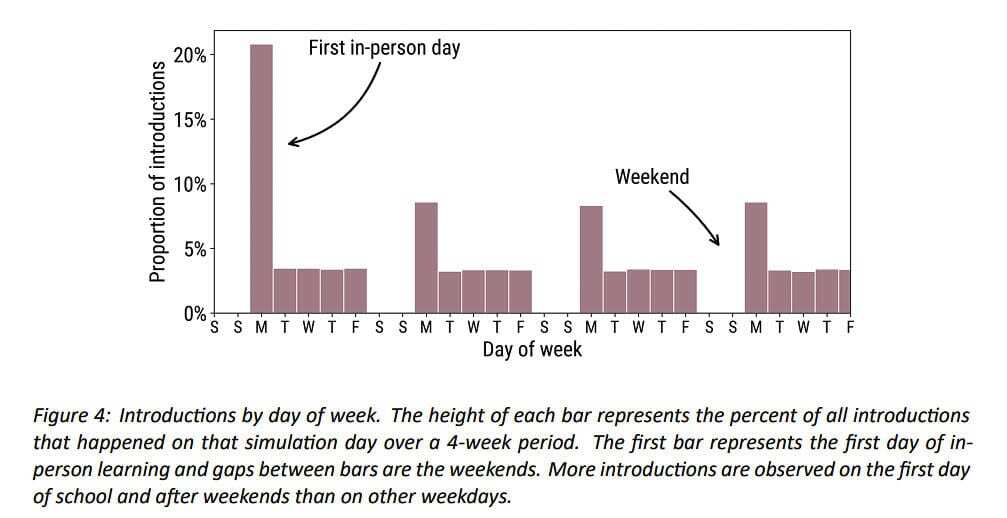
As for whether vaccinating teachers could be an effective approach to minimize that danger, the study simulated a “perfect” vaccine, meaning all teachers were vaccinated, and the vaccines fully limited serious cases.
Even in that perfect scenario, outbreaks were likely to continue, especially if it meant students being in classrooms more days out of the week. Older grade levels would be likely to spread the virus among themselves, take it home, and potentially increase the prevalence in their community.
Part of the reason for that is limited information on whether vaccinated persons can still potentially be a carrier for the virus if exposed. Vaccinations are also likely to lead to longer school days and more time in classrooms, which could increase the chance of students infecting each other, and then bringing the virus home to their families.
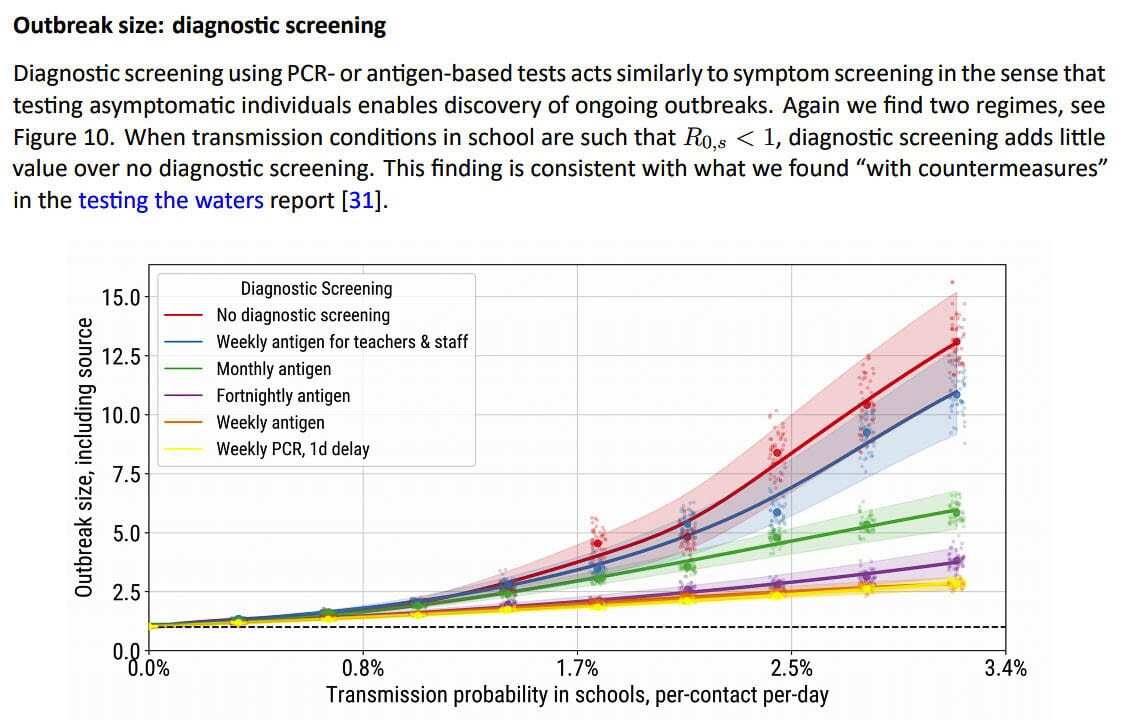
Ultimately, the report concluded, it is a combination of mitigation measures, done consistently and effectively, that will limit the potential of widespread outbreaks linked to schools.
Those include health attestations, temperature checks and questionnaires, isolation and frequent testing in the days after a known exposure, and vigilance in implementing proper hygiene, mask wearing, and class size limitations.
“Taken together, our reports provide insights into the complex dynamics related to COVID-19 and reopening schools,” said Daniel Klein, senior research scientist at IDM. “Even when teachers and staff are vaccinated, there are no zero-risk solutions. Yet the most durable finding across all of our analyses is that countermeasures and symptom screening – combined with diagnostic testing in high-transmission settings – can effectively mitigate the spread of COVID-19 in our schools and communities.”




